
When is the best time to visit Alaska? Classically, summertime is the best time to visit Alaska, with open roads, warmer temperatures, and plenty of active wildlife.
However, each season- and each month- offers unique experiences. As such, depending on what you’re looking for, the best time to visit Alaska may be different for you.
Here, I’ll break down what you can expect in each season so that you can determine when is best for you.
First, let’s set the scene. Alaska is the northernmost state in the USA, with a land border only with Canada. In fact, it’s much closer to Russia than New York! With sub-freezing temperatures and an incredibly sparse population, it’s a unique place to visit.
You will probably be surprised at how different each season can be in Alaska. Before I visited for the first time, I thought that Alaska was freezing with snow on the ground year-round! Boy, was I wrong!
But now you can learn from my faulty thinking. Alaska can be drastically different and has wild things to offer whether you visit in summer, fall, winter, or spring. This incredible wilderness has breathtaking landscapes in every season!
Check out this video I made of my Alaska travels to get a better sense of what Alaska is like in the summer:
[If you can’t see the video, you may need to disable your ad blocker.]
And there are some specific need-to-knows for when the best time to visit Alaska is. Let’s take a look at them!
Visiting Alaska in the Summer

Stereotypically, when you think of Alaska, you might picture a frozen, snow-covered tundra with igloos, polar bears, and dog sledding. But if that’s the image you have in mind, Alaska definitely will surprise you- especially in the warmer months.
Instead, temperatures rise, wildflowers bloom, and black and brown bears emerge from hibernation. Summertime is full of life in Alaska! And chances are, that is when you will choose to visit.
Summer in Alaska is the most popular time of year – particularly in July and August when children are out of school. This period may even be extended from mid-June to Mid-September!
Long daylight hours mean plenty of time to do activities, excursions, and just generally explore Alaska.
I have a whole article dedicated to what Alaska is like in August, which you can see here.
Daylight
If you visit Alaska during the summer season, especially any time around June 21st, you’ll be graced with an incredible amount of daylight. In Anchorage, you’ll have around 19 hours of daylight, and in Fairbanks, you’ll be able to enjoy 22 hours of sun! In some parts of Alaska, the sun doesn’t set for three whole months!
This generally means that you can do activities a lot later and things are open into the night, maximizing your vacation time. Of course, you will need to fit some sleep in as well – so it’s best to choose a hotel with blackout curtains! Check out my post on where to stay in Alaska’s most popular towns for lodging recommendations!
Temperatures
You’ll be surprised at how warm Alaska can get in the summertime as well. In the southern regions, expect temperatures from 60°F to 80°F. That’s right, in Alaska! The interior can get even warmer than that – temperatures have been known to reach up to 100°F! Nights are cooler and the northern regions are, as usual, colder.
Accessibility

Summertime is the only season in which all of Alaska is accessible to tourists. National Parks are at their most accessible in the summertime. If you’re planning on hiking around Denali National Park, home to North America’s highest peak, you won’t be able to until June, and Mount Denali typically closes in mid-September.
Other northern regions, especially those in the Arctic circle, remain closed until May, making summer the only narrow window to see them. Hiking is only possible in the mountains in the summer and in the couple of months that bookend it. Check out my favorite Alaskan hike, the Harding Icefield Hike!
Since summertime is when Alaska’s roads are the clearest, this is the best time to road trip around Anchorage. There are plenty of gorgeous coastal towns worth checking out, like Seward, Homer, and Valdez. And the drive from Anchorage to Seward is full of gorgeous sights and fun things to do; learn about them here! You won’t want to miss all the things there are to do on the Kenai Peninsula.
It’s also prime time for boat excursions to visit glaciers and go fishing, as these usually close in September.
And if it’s in your budget, a helicopter tour or float plane excursion is a fantastic way to see more of Alaska.
Wildlife Viewing
Summer is generally a great time to see Alaskan wildlife.
If you know where to look or join a tour, you may have the opportunity to look out for moose and bears, as well as lots of birdlife, like bald eagles.
Summer is definitely the best time to see bears, who are hibernating in the winter! If you’re lucky, you may even spot them feasting on salmon. Summertime is when the salmon run, drawing bears in and making for some spectacular wildlife viewing. (Some salmon runs start in mid-May, but the majority happen from June to August.)
Humpback whales show up from May to September, and you might also get the chance to see orcas in the sea.
For an easy, safe, relatively cheap way to see wildlife, check out this post!
Festivals
The Alaska State Fair is in the country from late August until early September. Held in Palmer (right by Anchorage), it is an annual celebration of all things Alaskan. Enjoy rides, delicious food, and the midnight sun at this end-of-summer celebration!
Things to do in Alaska in the Summer
- Take on hiking trails
- Glacier tours (check out my list of 17 beautiful glaciers to visit in Alaska!)
- Boat tours
- Helicopter tours (and these other activities that are worth splurging on in Alaska!)
- Glacier dog sledding
- Fishing
- Bear watching
- Dog carting (mushing when no snow is on the ground)
- Mountaineering
- Kayaking
- Whale watching and other boating excursions
- ATV adventures
- Go on an Alaska cruise
- Tour the arctic circle
- Visit national parks like Denali National Park, Katmai National Park, Kenai Fjords National Park, and Glacier Bay National Park
- Visit Kodiak Island
Check out 30 free things to do in Alaska here!
Visiting Alaska in the Spring
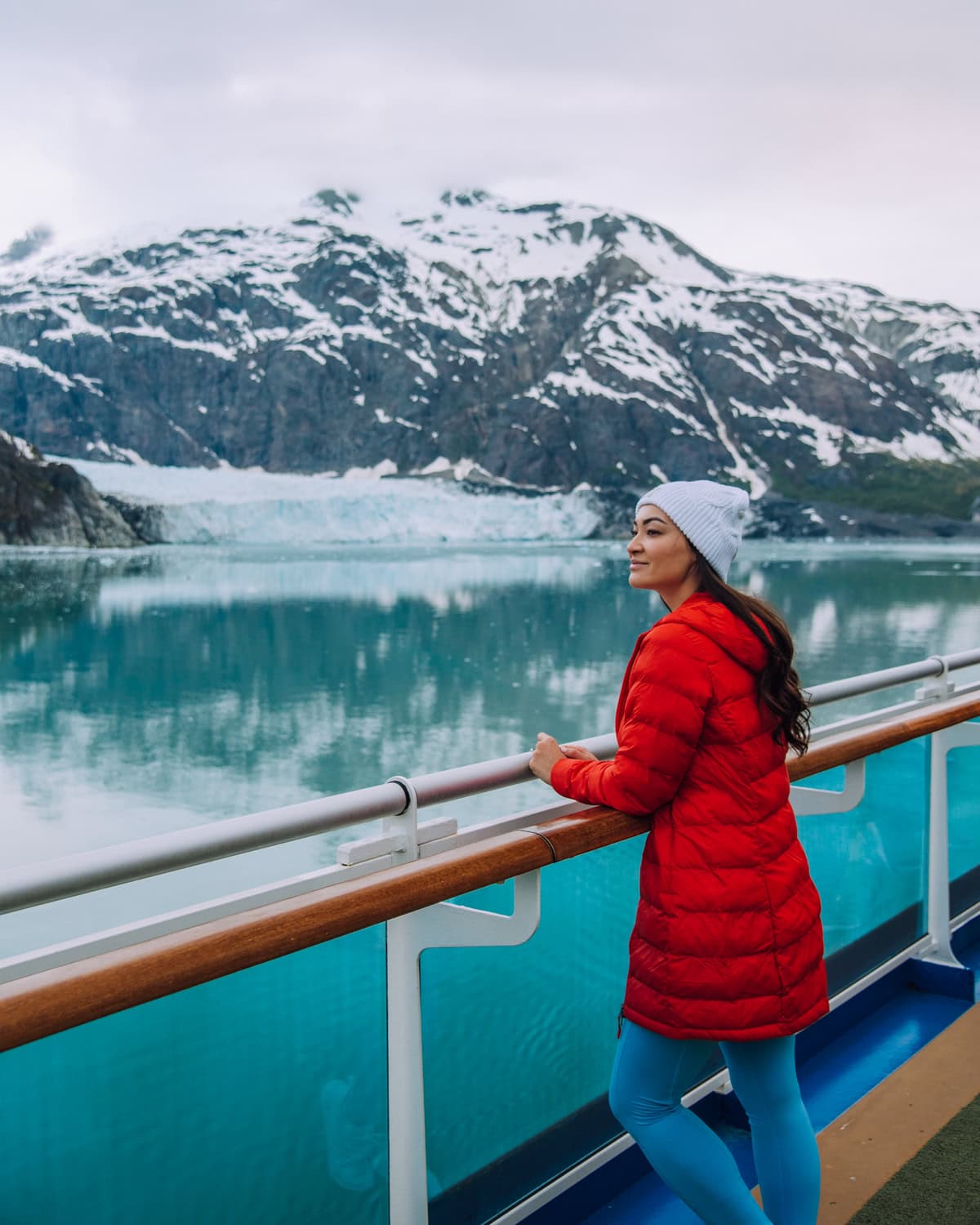
Spring is shoulder season in Alaska. Come March, it’s time to experience winter activities in the perfect climate. You will have snowy days in early spring, and sun in late spring – and on both sides, you should be able to enjoy fewer crowds and cheaper prices!
Cruise ships start taking off typically in late April or early May. And if you do an Alaskan cruise this time of year, prices are usually way cheaper than in peak season (the summertime).
We did an Alaskan cruise at the end of May and I absolutely loved it! Prices made it way more affordable and we had great weather! (May typically has less rain than the other summer months.) You can read all about our experience cruising in May in my Alaska cruise review!
Generally speaking, you’ll find fewer visitors which means you’ll find cheaper lodging and rates, too.
Daylight

The nights start getting noticeably shorter starting in February, and then progressively shorter as spring advances towards summer. By April in Anchorage, the sun rises at 6 am and sets at around 9:50 pm, giving you plenty of time to do activities throughout the day and evening. I took the above photo around 9pm in Juneau in late May- the sun hadn’t set yet!
Temperatures
Spring temperatures vary wildly depending on where you are and what end of the season it is. In Anchorage in March, you’ll have a high of 30 – 38°F and a low of 14 – 24°F. In May, this rises to a high of 53 – 62°F, and a low of 38 – 47°F. Fairbanks has much cooler weather in March, with a high from 18 – 35°F and a low from -5 F to 11°F. However, in May, Fairbanks’s temperatures are only slightly colder than in Anchorage.
Accessibility
If you want to hike or visit remote northern regions, you’ll have to wait until the very end of spring. Most seasonal places start opening up in May. If you get to them right at the start of the season, you may be able to get cheaper shoulder season rates. If you are in Alaska to hike, expect to have to stick to the lower-altitude places in the spring. Most mountain routes are not accessible until the summertime.
Wildlife Viewing
You should be able to see some wildlife in spring in Alaska, especially during the latter part, when bears are out of hibernation. Moose can generally be spotted all year round, as can some of Alaska’s birdlife. In March – April, expect to see Gray whales across the coast. Also, you’ll be able to spot sea lions around this time until late July.
Festivals
The Anchorage Market begins in May and runs to September. You also may be able to enjoy the Kodiak Crab Festival in May, the Slush Cup skiing festival in April, and the Fur Rendezvous Dog Sledding Festival in March. And most famous of all… the Iditarod happens in March and starts in downtown Anchorage!
Things to do in Alaska in the Spring
- Watch the Iditarod
- Moose viewing
- Skiing/snowboarding
- Snowshoeing
- Boat tours (depending on accessibility)
- View the northern lights (track them here!)
- Mushing
- Snowmobiling
- Visit hot springs (this one near Fairbanks is the most easily accessible hot spring)
Visiting Alaska in the Fall

Fall is quite similar to spring in regards to when activities are available, just in reverse. You’ll find that most activities are open in September, and things will gradually start closing from October onwards, apart from all-season destinations. Traveling in the fall will also mean that you are likely to get a discount on accommodation and tours.
We visited in late summer/early fall and I personally think that it’s the best time to visit Alaska! (But I prefer avoiding crowds, so shoulder season is a familiar friend). The one noticeable thing we weren’t able to do was a boat tour, as most shut down come September. Check out our Alaska itinerary here, it is formatted for all trip durations!
Daylight
Daylight is generally pretty good in September, with relatively long days, but by October, the nights start drawing in. November is one of the darkest months of the year, with only an average of six hours of daylight in Anchorage.
However, fall is one of the best seasons to spot the elusive northern lights. Days are short enough for them to make an appearance in dark enough places all over Alaska, and this is one of the most spectacular sights to witness in the state! Fairbanks, Alaska is known as the best place for viewing the northern lights, so consider adding that to your Alaska itinerary.
Temperatures
Fall temperatures start off relatively warm but drop quickly. In Anchorage in September, you’re looking at around 50 – 62°F in the daytime and 39 – 49°F in the nighttime. By November, expect snow and temperatures around 23 – 33°F in the day, and 10 – 23°F at night. If you’re staying in Fairbanks, temperatures will be similar to Anchorage in September, 5 – 20°F in the daytime, and -9 – 6°F in the nighttime.
Accessibility

Early September is one of the best months for hiking, but that changes by the time October rolls around. By mid-to-late September, most mountains are off-limits for hiking and other activities. You should still be able to access lowland areas. However, pretty much every seasonal location is blocked off by October, so most of the season isn’t suitable for extensive hiking.
Wildlife Viewing
There are some year-round animals that you will be able to spot – such as moose on land and orcas in the sea – but many mammals will be in hibernation by the middle of September. When the snow begins, you may see some animals, like moose, more frequently as they make journeys to feed.
Festivals
Although there are many more festivals in the summer months, there are a few in the fall too. The Sitka WhaleFest is a popular tribute to Alaska’s much-loved whale population, and Alaska Day is in October (also fun to celebrate in Sitka; you’ll find a parade!).
Things to do in Alaska in the Fall
- Hiking (early fall)
- Glacier tours
- Helicopter tour (early fall)
- View the northern lights
- The tail end of salmon fishing
- Whale watching (early fall)
- Chase fall colors
- Mushing (or dog carting when no snow is on the ground)
- Visit hot springs (this one near Fairbanks is the most easily accessible hot spring)
Visiting Alaska in the Winter
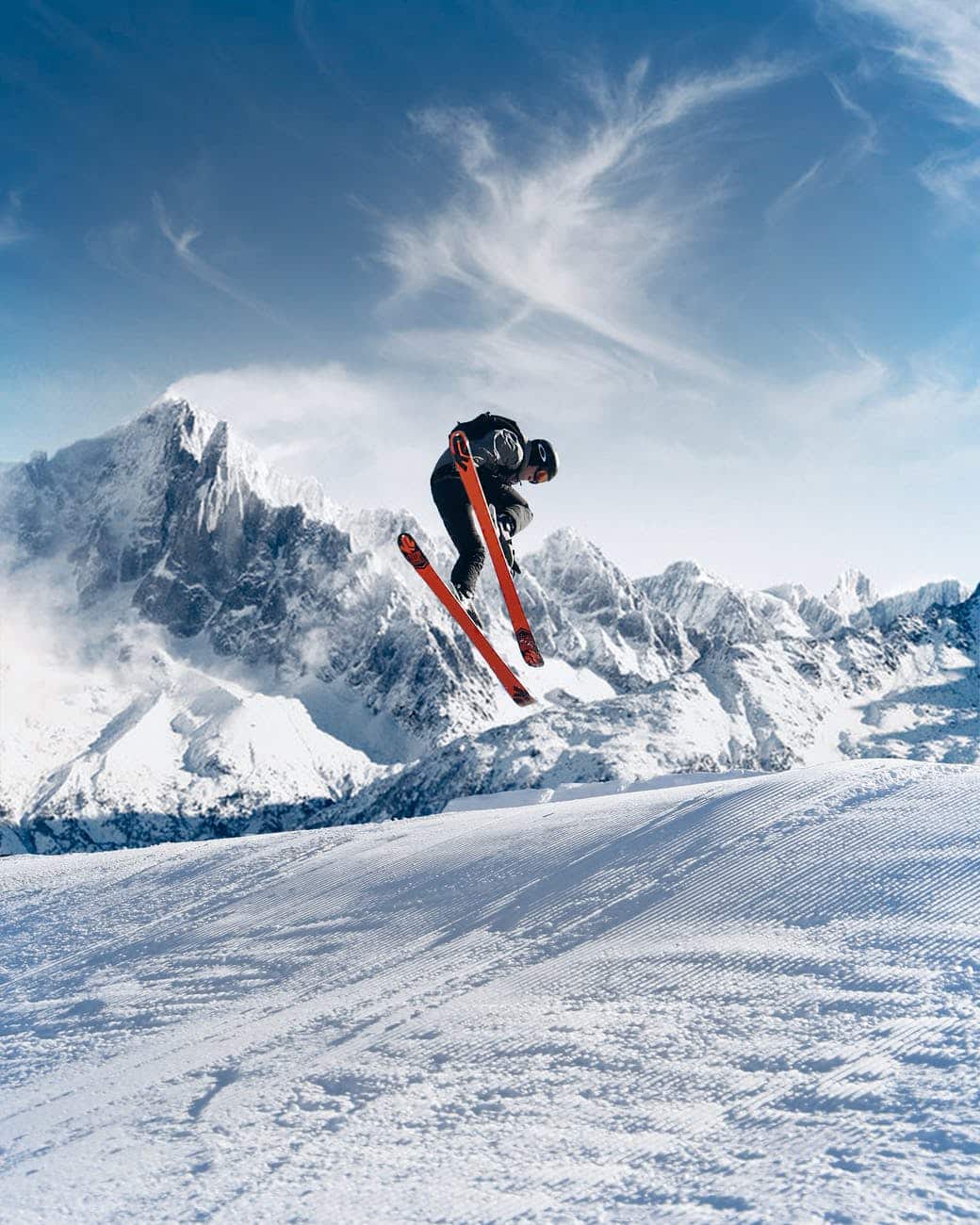
Alaska in winter is a time unlike any other. Days are short, the scenery is snowy, and it is pretty much the best time of year for snow sports like skiing, dog sledding tours, and seeing the gorgeous Aurora Borealis. (The only time I’d say it’s potentially even better is in March).
Daylight
If you’re visiting Alaska in December, you won’t get much daylight at all. Juneau’s shortest day sees 6 hours and 22 minutes of sunlight, Anchorage sees five hours, and some northern towns only get an hour or two of light. (Barrow, the northernmost town in Alaska, doesn’t get any sunlight at all for 67 days!) You also might feel like it never properly gets light. February has slightly longer days and shorter nights, so it is the best month of winter to visit if you’re hoping to have more daylight for activities.
Temperatures
It’s no surprise that Alaska in winter is cold. You can expect temperatures to be below 32°F everywhere, with below-zero temperatures common up north. You can also expect a lot of snow, as well. On that front, snowstorms make winter in Alaska the riskiest season as a bad storm could put a damper on your plans. And you’ll definitely need to bring your thermals! (And if you need to know what to wear in Alaska, check out this post!)
Accessibility
No high-ground regions are accessible in winter, and many remote areas in northern Alaska are cut off. You will be able to go to the cities and main towns, especially those that have specific winter activities like skiing. Note that you may have to fly directly into these cities since driving could be difficult. Valdez, Alaska (you can see my Valdez guide here) becomes a skiing and snowboarding hot spot come wintertime, so it’s a great place to visit if you’re a fan of snowsports!
Wildlife Viewing
You can spot wildlife year-round – winter is actually a good time to see some animals who don’t hibernate, like moose who sometimes venture into more urban areas to seek out food. Birdwatching is also a possibility. Most wildlife-watching tours, however, do not run in the winter.
Festivals
Despite the cold and dark weather, there are some festivals in Alaska in the winter. In December, the international film festival held in Anchorage is a must, as are Races in Unalaska, which starts in late February.
Things to do in Alaska in the Winter
- Skiing/snowboarding
- Snowshoeing
- View the northern lights
- Ice fishing
- Snowmobiling
- Mushing (dog sledding)
- Visit hot springs (this one near Fairbanks is the most easily accessible hot spring)
The Best Time to Visit Alaska: FAQ
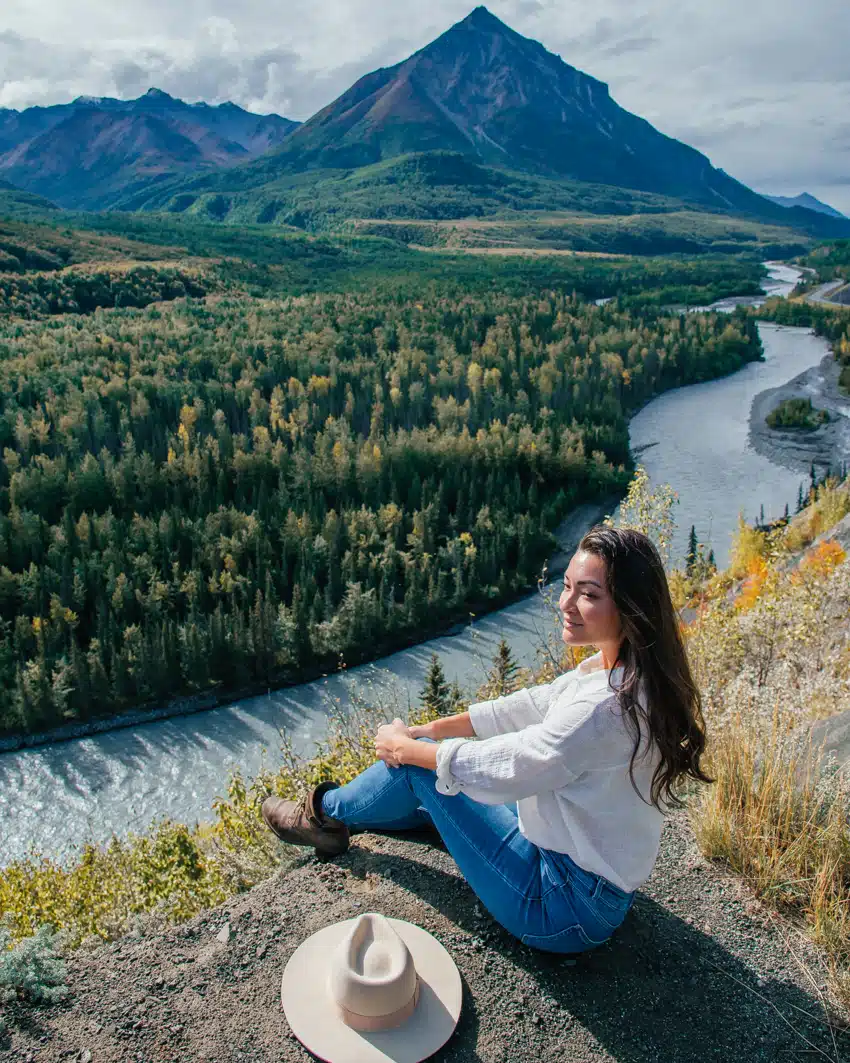
In case you want some quick answers to our most-asked questions about the best time to visit Alaska, here you go!
What is the best month to go to Alaska?
The best month to visit Alaska is June, followed by July and August. While Alaska is a magical destination year-round for different reasons, most travelers would prefer summer in Alaska. June, specifically, has stunning wildflowers, long days, warmer temperatures, and less rain than later in the summer. However, don’t discount other months which offer things like northern lights, cheaper rates, fall leaves, winter sports, and more.
What are the average monthly temperatures in Alaska?
Here are the monthly averages for Anchorage, Alaska:
January: high of 22°F, low of 9°F
February: high of 26°F, low of 12°F
March: high of 34°F, low of 18°F
April: high of 44°F, low of 29°F
May: high of 55°F, low of 39°F
June: high of 62°F, low of 47°F
July: high of 65°F, low of 52°F
August: high of 63°F, low of 49°F
September: high of 55°F, low of 41°F
October: high of 40°F, low of 28°F
November: high of 28°F, low of 16°F
December: high of 24°F, low of 11°F
When can you see the northern lights in Alaska?

You can see this magical phenomenon from August until April, provided there is enough solar activity and little to no cloud coverage. The northern lights actually occur all year round, however, you usually cannot see it in May, June, or July with the midnight sun.
What month is best to see northern lights in Alaska?
September and March are the best months for the aurora borealis in Alaska since these months have heightened solar activity. To further increase your odds of seeing the northern lights, visit Fairbanks, Alaska, which is situated in one of the best places in Alaska for solar activity. You can actually stay in a glass-roof igloo at Borealis Basecamp in Fairbanks!
What is the cheapest time to visit Alaska?
Winter is the cheapest time to visit Alaska, specifically January, which often sees the cheapest flights. However, if you don’t want to visit Alaska in the winter, May and September are shoulder seasons and are considerably cheaper than the summertime.
How many days do you need in Alaska?

Ideally, you should spend at least a week in Alaska. It’s a long enough flight that you’ll want to make your trip worth it! You can see my recommendations on what to do for trips of different lengths here.
What month is the rainiest in Alaska?
It depends on where you are in the state, but typically September is the rainiest month in Alaska, followed by August. Here’s an example of why location matters: Anchorage sees 3 inches of rain, Seward sees 9.9 inches, and Ketchikan (in Southeast Alaska) sees 14.3 inches.
What is the driest month in Alaska?
April is the driest month in Alaska with an average of just .4 inches of rain in Anchorage.
What are the hottest months in Alaska?

With an average high of 65°F in Anchorage, July is the hottest month in Alaska, followed by August and June. It typically gets warmer in the interior region; July’s average high temperature in Fairbanks is 73°F.
Is it better to go to Alaska in summer or winter?
Summertime is classicly better for a trip to Alaska. The roads are far more accessible, the weather is much warmer, and the days are much longer. However, if you want to do winter sports or see the northern lights, you’ll prefer winter.
When is the best time to visit Alaska on a cruise?

Summer is the peak season for cruising to Alaska. That being said, if your idea of “the best time” also includes lower rates, then you’ll prefer cruising in May or late August. We absolutely loved our cruise in May!
When is the best time to visit Alaska for fishing?
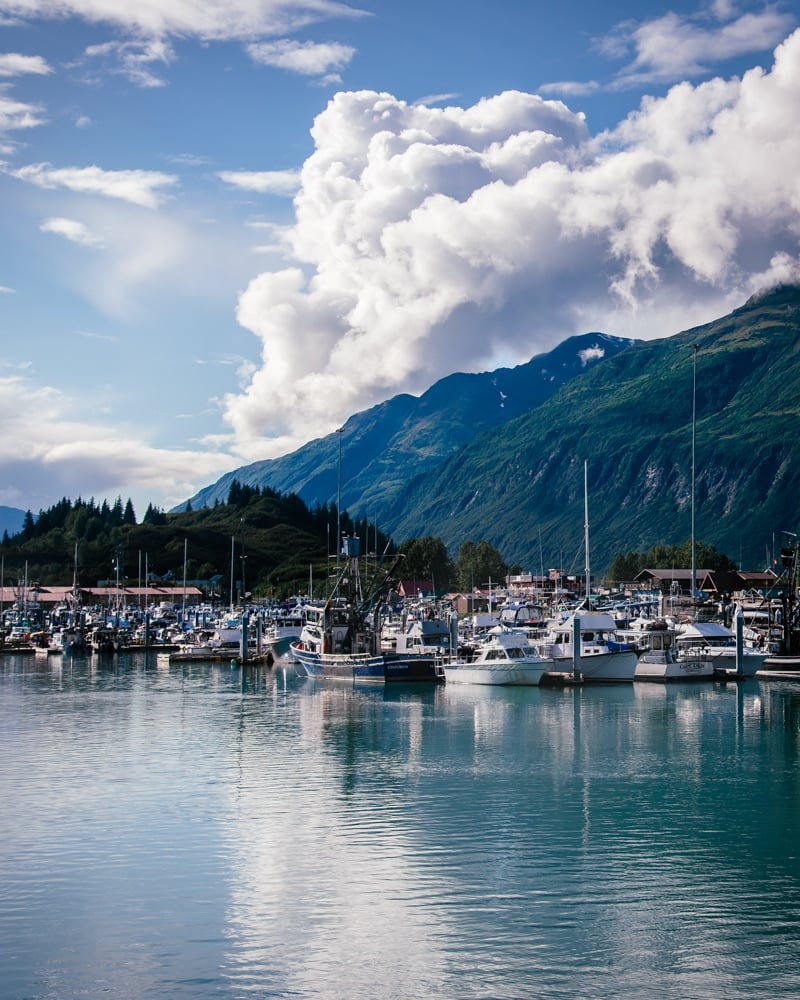
Though you can fish year-round in Alaska, the state has great fishing from May through September. You’ll find the most salmon varieties in July.
Which season is the best time of year to visit Denali National Park in Alaska?
Summer is the best season to visit Denali National Park, as it is the most accessible this season. One thing to note: there are often clouds covering the peak of Mount Denali. If you’re determined to see the peak of the tallest mountain in North America, stay in/around the park for more than three days to maximize your chances of seeing it.
So, when is the best time to visit Alaska?

The best time to visit Alaska is classically in the summertime. But it really depends on your travel preferences. If you want plenty of daylight which you can jam-pack with activities, the start of summer, from late May to early July, is best for you. If you are visiting Alaska on a budget, try spring or fall for better prices.
Heading to Alaska for wildlife viewing? Then anytime from May to September is best, as you’ll see bears and tours will be running. If you want to hike, the same months are appropriate (although many routes at altitude don’t open until June).
Of course, if you want to visit Alaska to ski or do other winter sports, see the northern lights, or enjoy the snow, visiting in winter and early spring is the best for you! March will be your favorite month in Alaska if you want a spring-like winter experience.
For adventurers, Alaska is paradise year-round. Every month in Alaska has its appeal. Summer is undoubtedly the time when you can see and do the most, but there is something both enigmatic and cozy about the coldness of an Alaskan winter.
So based on this information, which season would you prefer to visit? Drop your answer in the comments!
Regardless of when you visit, be sure to check out this list of 33 crucial things to know before visiting Alaska!
And if you’re from Alaska or have visited and have more insights on the seasons, let me know in the comments!
Lastly, here are a few more Alaska posts you might enjoy:
- The Ultimate Alaska Itinerary
- 30 Free Things to Do in Alaska
- 50 Best Places to Visit in Alaska
- 18 Most Beautiful Towns in Alaska
Safe travels!
Jasmine










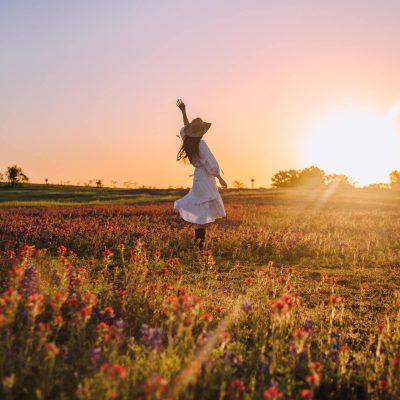


4 Responses
Hi lovely itinerary was thinking of the same route adding Juneau before and ending at Anchorage. When did you travelled to Alaska? Thank you sharing!
Hi Narcea! I visited in late August until early September! You should definitely add Juneau if you can! 🙂
Hi Jasmine
I am Zuleika from Aruba a small island in the Caribbean. We wanted to see somenting different experience some cold and snow. And would like to see the Northern lights, but don’t want the extreme cold. what month should we go to Alaska? tkss
Hi Zuleika!
I’ve been to Aruba 🙂 Assuming you would be visiting Fairbanks which is one of the best places to see the northern lights in Alaska, prime northern light viewing typically occurs between the months of August and April. The darker the sky gets (the further into winter you get) the better you will be able to see the northern lights. We visited Fairbanks at the beginning of September and there wasn’t snow on the ground. Although we did the see the northern lights, they were faint. You might want to try sometime in October. The sky will likely be darker then for better northern light viewing and you will probably have snow on the ground. However, it shouldn’t be excruciatingly cold then. But you can check average temperatures in Fairbanks for October and see if it’s something you think you can do!